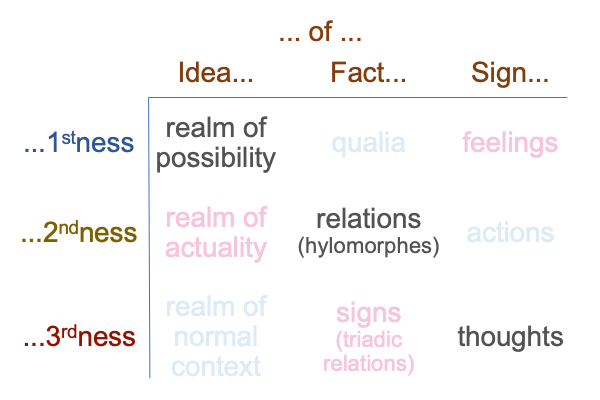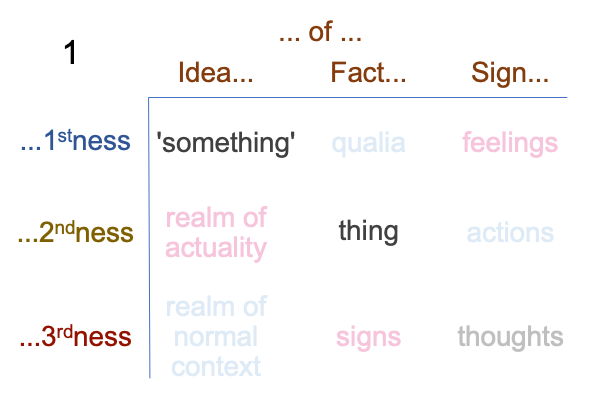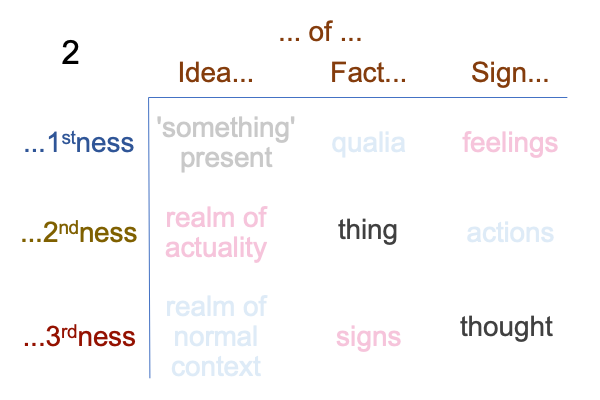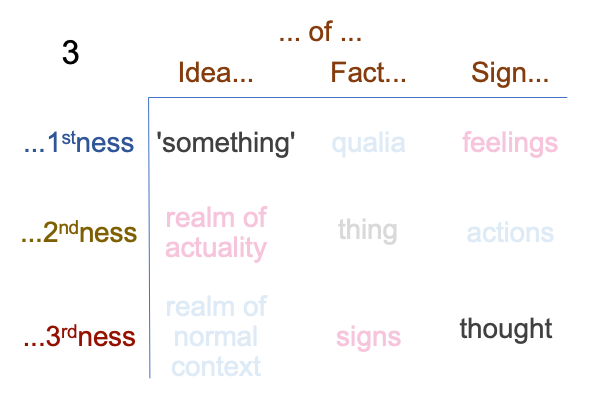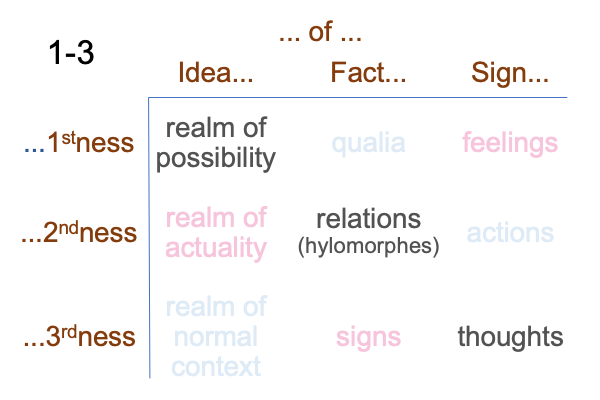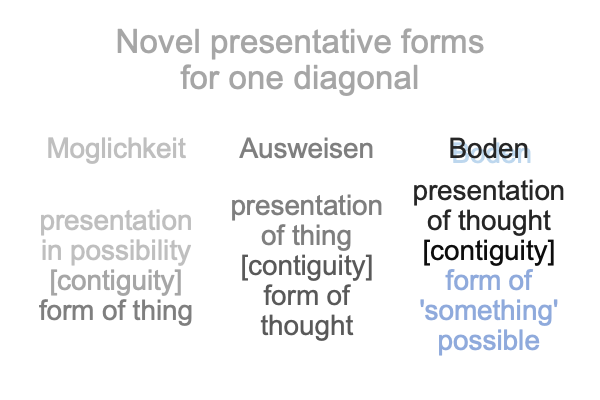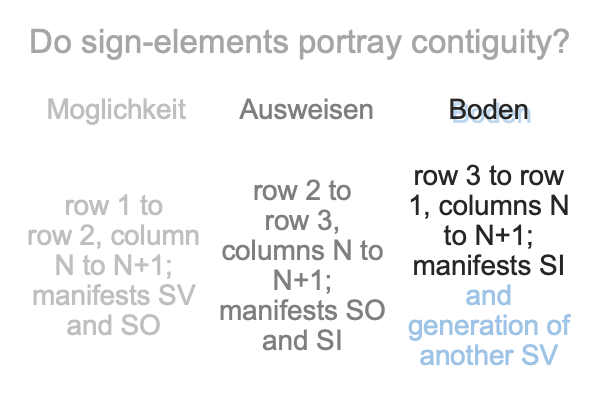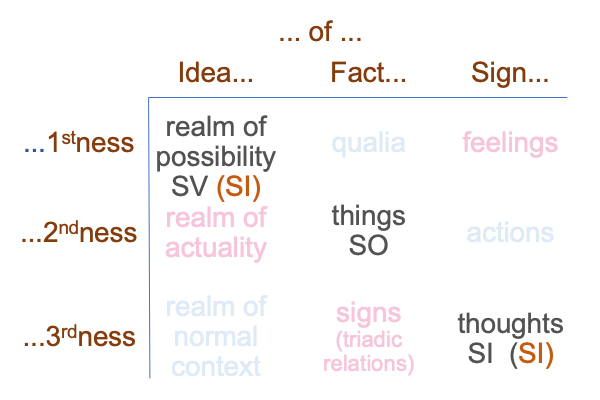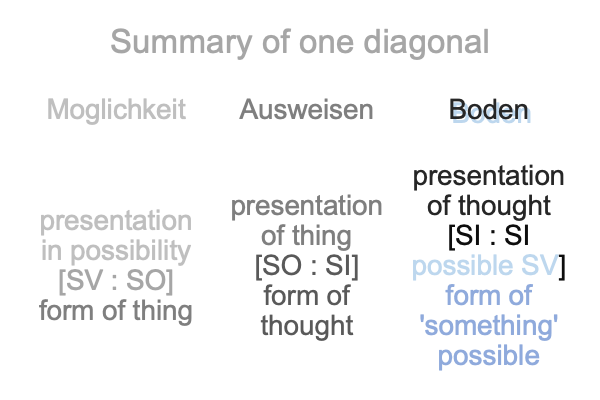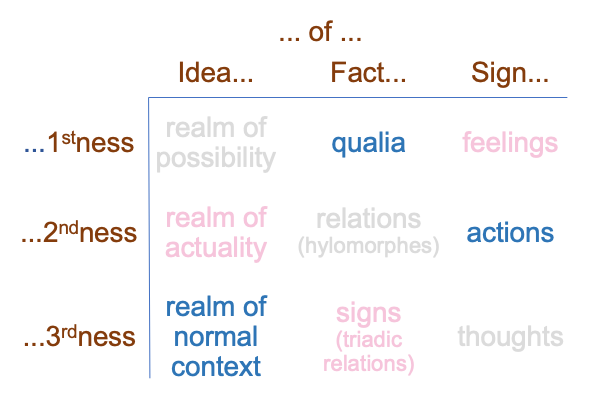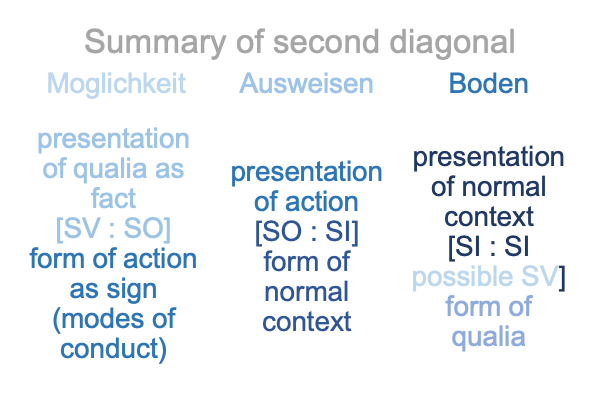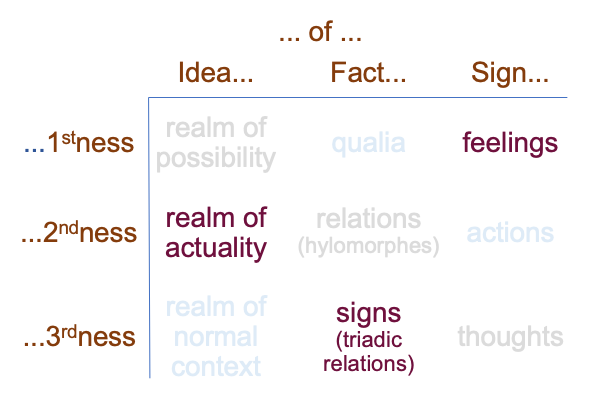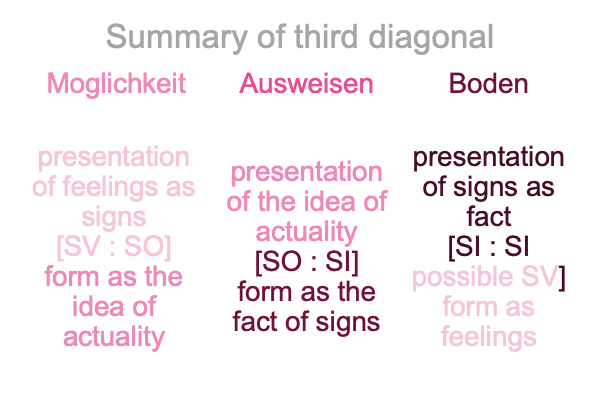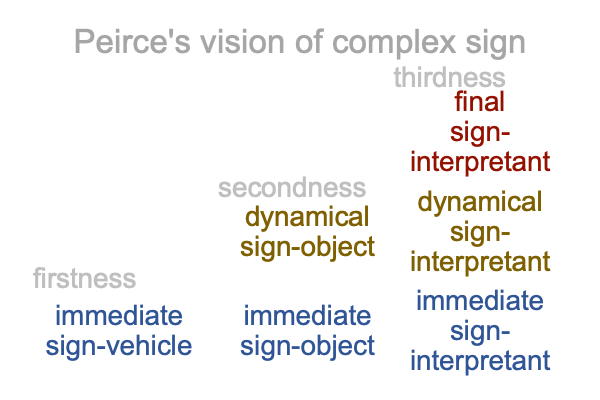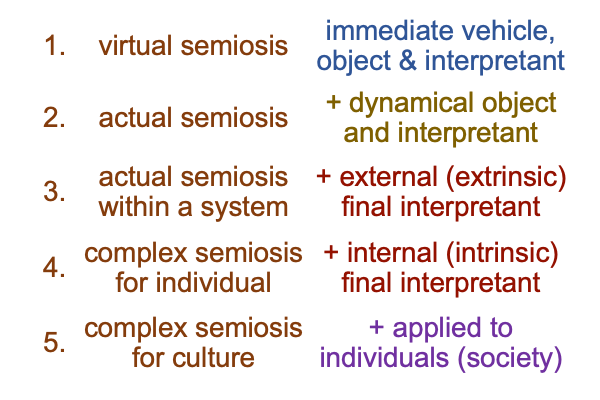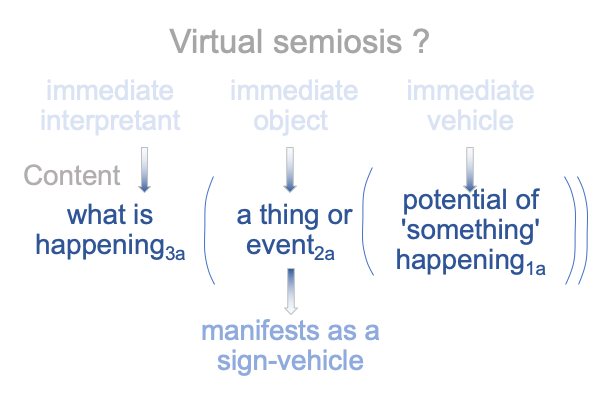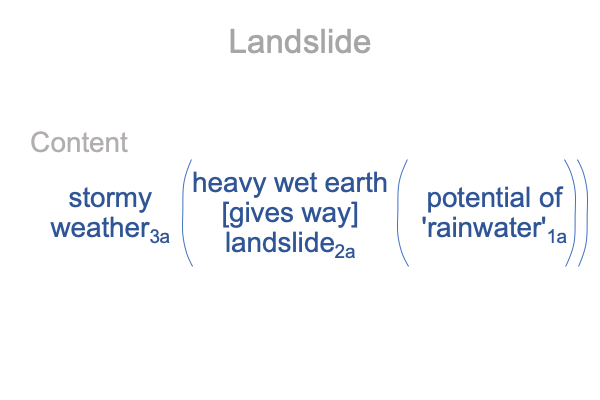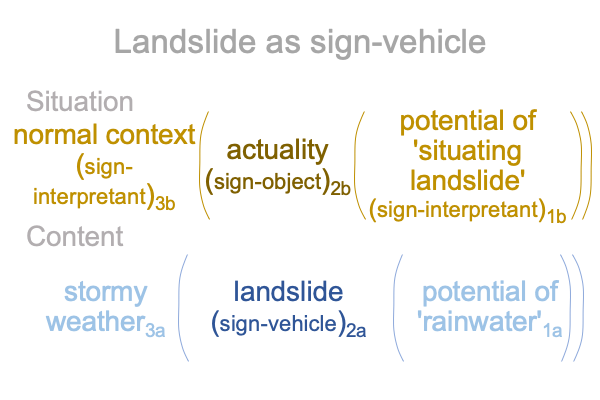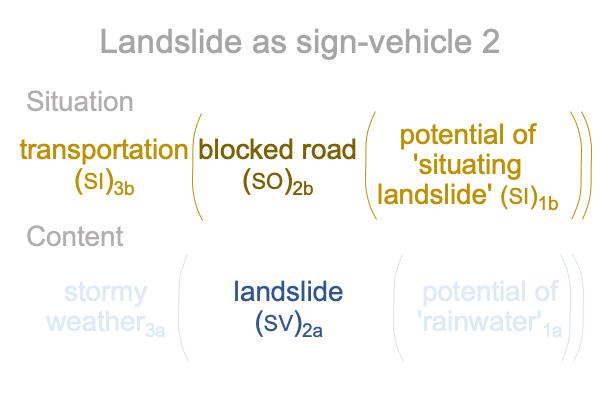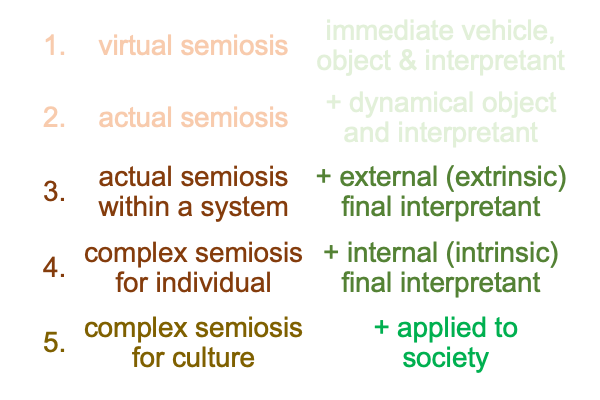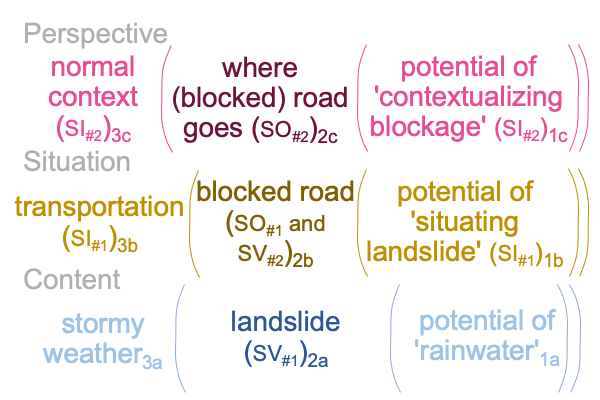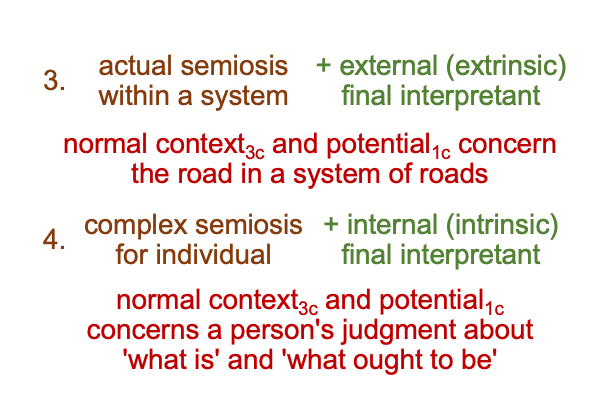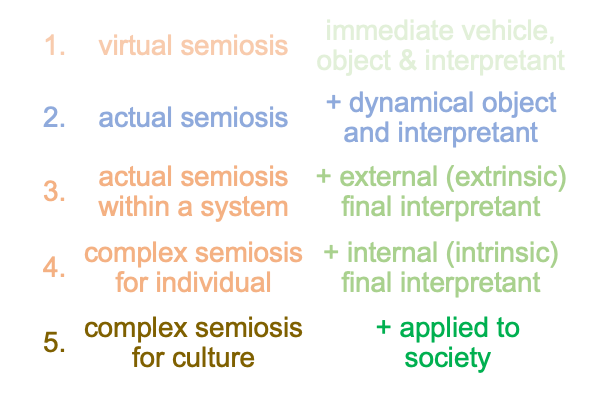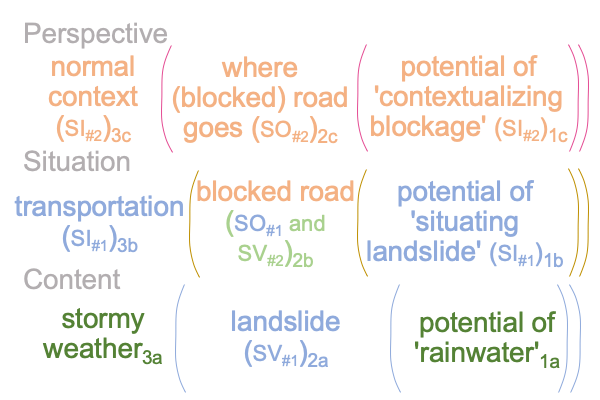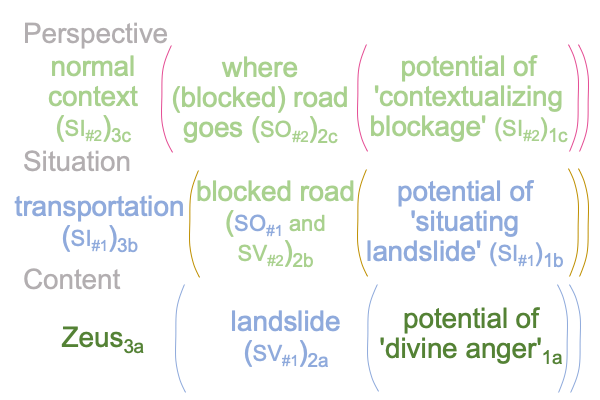Looking at Appendix 1.1 in Brian Kemple’s Book (2019) “The Intersection” (Part 2 of 18)
0033 So why are presentative forms and the grounding of transcendence important?
It seems that they govern the ways in which the categories of firstness, secondness and thirdness appear. The process is not straightforward. After all, if one category associates with what is expressed and the adjacent higher category goes with what is experienced (with the caveat that thirdness in what is presented wraps around to firstness in form), then each presentative form expresses two categories.
Oh yeah, that makes sense.
0034 But, it does not make sense.
Kemple quotes from Peirce’s 1903 essay, “Sundry Logical Conceptions”, concerning the modes of appearance for the categories of experience. In the following table, nine presentative forms are listed. Vertical columns correspond to the category of experience for the presentative form. The rows correspond to expression according to category.
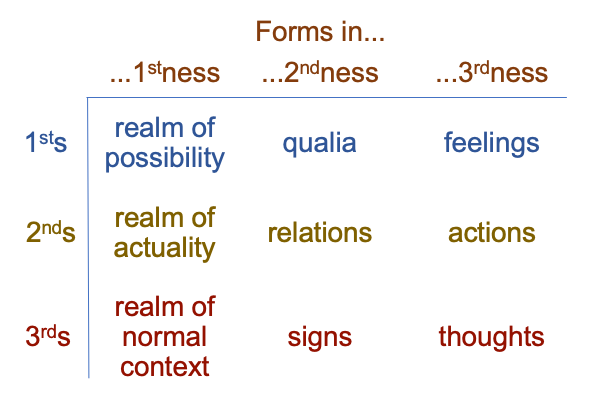
The columns denote forms and the rows denote appearance (presentation).
0035 For example, consider the form of firstness (first column) and the appearing category of secondness (second row) corresponds to an idea of secondness. Here, I depict it as ‘something’ in the realm of actuality. An idea pertains to ‘something’ actual.
Here is another example from the above table. The form of secondness (second column) and the appearing category of secondness (second row) corresponds to the fact of relations. To me, these relations are hylomorphic, consisting of two contiguous real elements, characterizing Peirce’s category of secondness. A thing is a fact of (hylomorphic) relation.
One more example will help. The form of thirdness (third column) and the appearing category of secondness (second row) corresponds to signs of secondness. Actions are signs of secondness. So are modes of conduct.
0036 Each element in the above table embodies a form in one category and an appearance in another category. So, two categories are involved for each item in the table. Plus, the matrix is exhaustive.
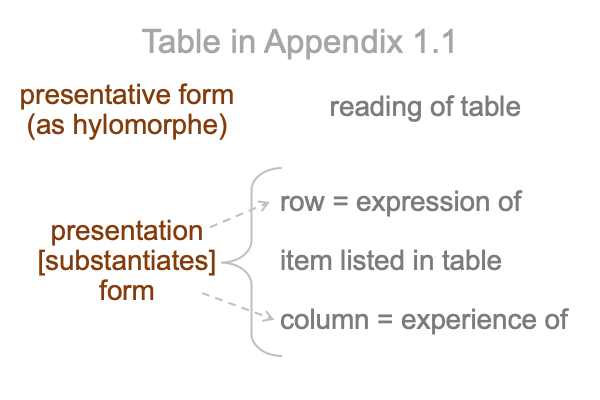
0037 What about the idea that transcendence is grounded in crossing categories?
My head swims. But, it’s not Kemple’s fault. It is the idea that the presentative form has a hylomorphic structure and that the element that corresponds to “matter” belongs to one category and the element that corresponds to “form” belongs to the adjacent higher category.
This idea is not apparent in Peirce’s table, pictured above.
Kemple continues…
0038 Going down the first column, forms in firstness may be labeled as “ideas”. So, the element in the first row and the first column, is an idea of possibility (or, ‘something’ in the realm of possibility). Likewise, ‘something’ in the realm of actuality corresponds to the idea of secondness. ‘Something’ in the realm of normal context goes with the idea of thirdness.
Going down the second column, forms in secondness may be labeled as “facts”. So, qualia are facts of firstness. Relations in the style of hylomorphes are facts of secondness. Signs and other triadic relations are facts of thirdness.
Going down the third column, forms in thirdness may be labeled as “signs”. Feelings, such as awareness of a thing of beauty, are signs of firstness. Actions, such as modes of conduct, are signs of secondness. Thoughts are signs of thirdness.
0039 Still, I have a problem.
Even though each element in the above table references two categories. The rows and columns do not highlight the hypothesis about transcendence developed in the previous blog, where the “matter” of a presentative form belongs to the adjacent lower category of its corresponding “form”.
Is there a ghost of a chance that Heidegger’s ground of transcendence haunts Perice’s table of presentative forms.
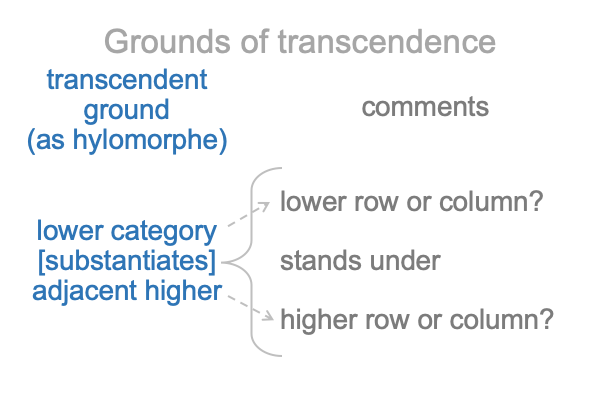
0040 Perhaps, I can conjure its specter by coloring a sequence of presentative forms, following the proposed hypothesis.
For each transition, from idea to fact, from fact to sign, and from sign to idea, there is a corresponding transition from firstness to secondness, secondness to thirdness and thirdness to firstness.
The result is a seqence of novel presentative forms that are composed of elements of the table. The lower category presentative form for both appearance (row) and form (column) serves as “matter”… er, I mean “presence”… and the higher-category presentative form in both appearance (row) and category (column) serves as “form”.
0041 In the following diagram, sequences appear in color.
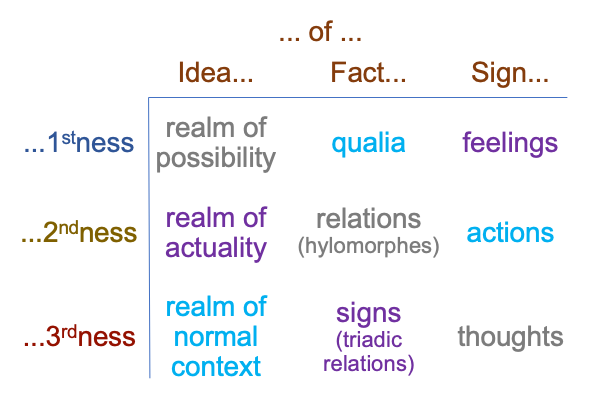
0042 The hylomorphic structure, lower-category presence [substantiates] higher-category form, embodies transcendence, defined as moving from one category to the adjacent higher category in both form and appearance. So, ways to imagine the coincidence of presentative forms and grounds of transcendence track the colors in the table above.

